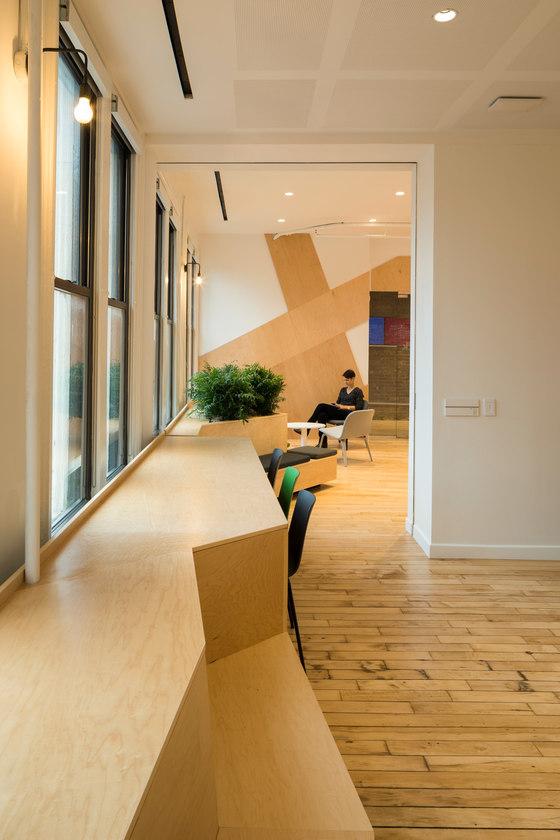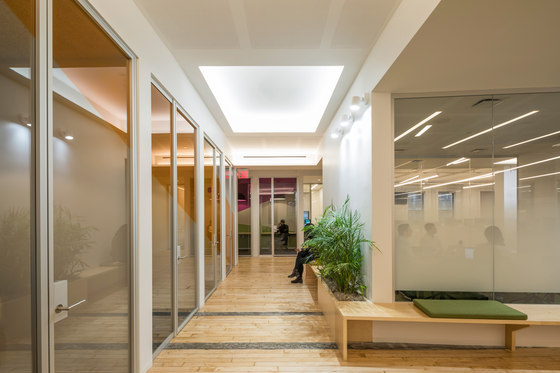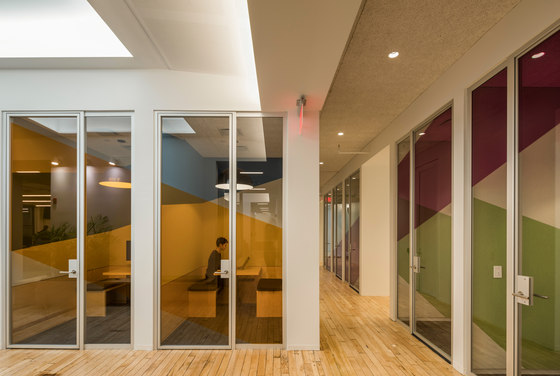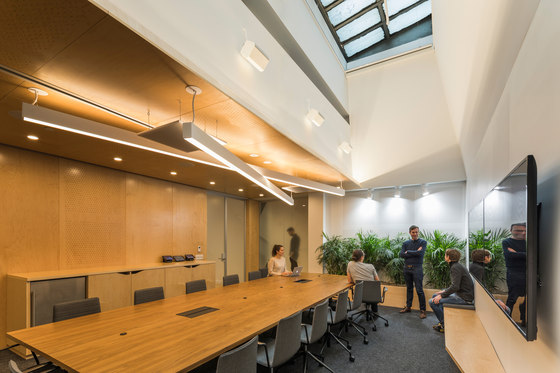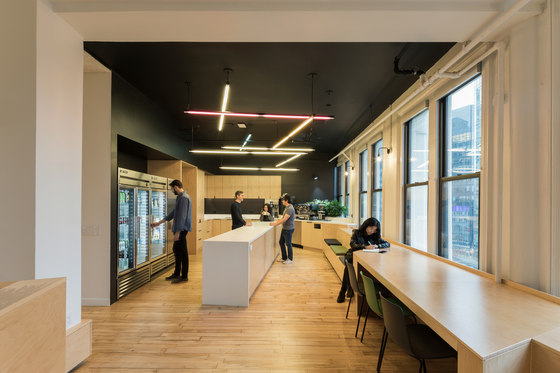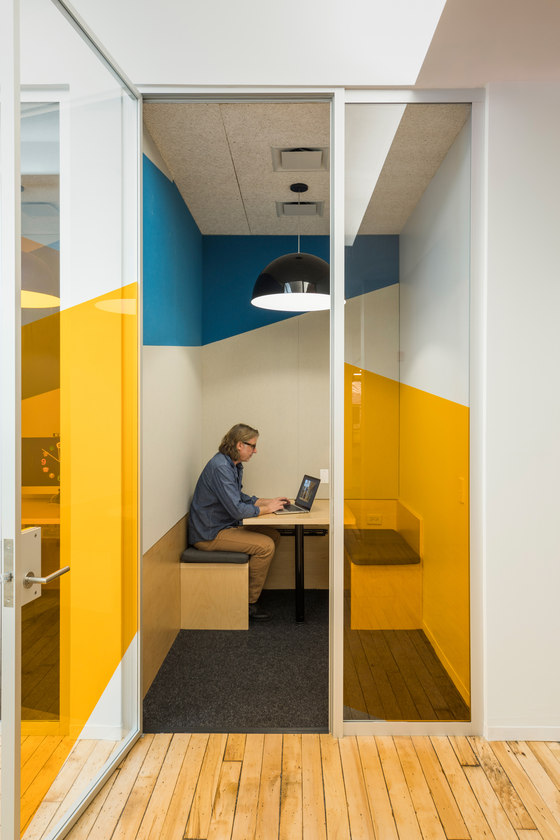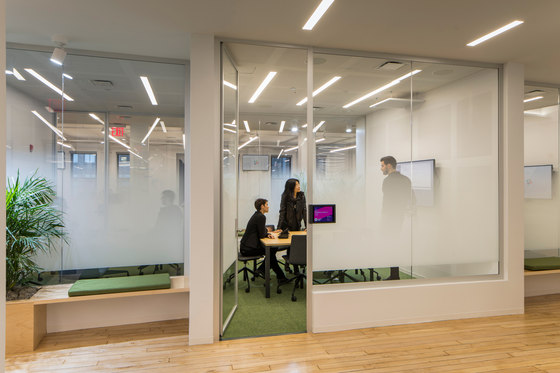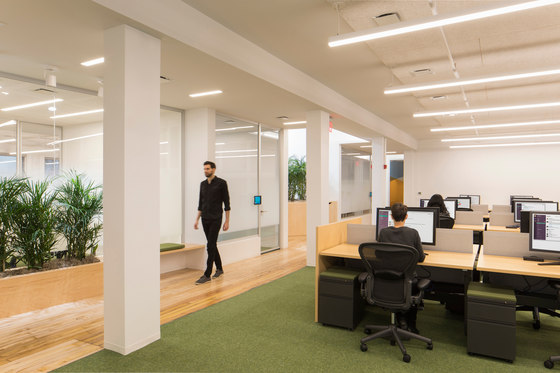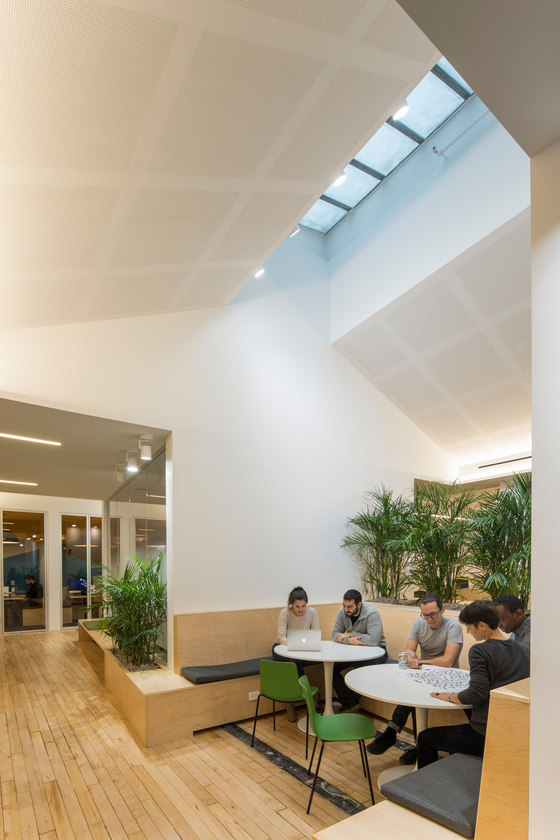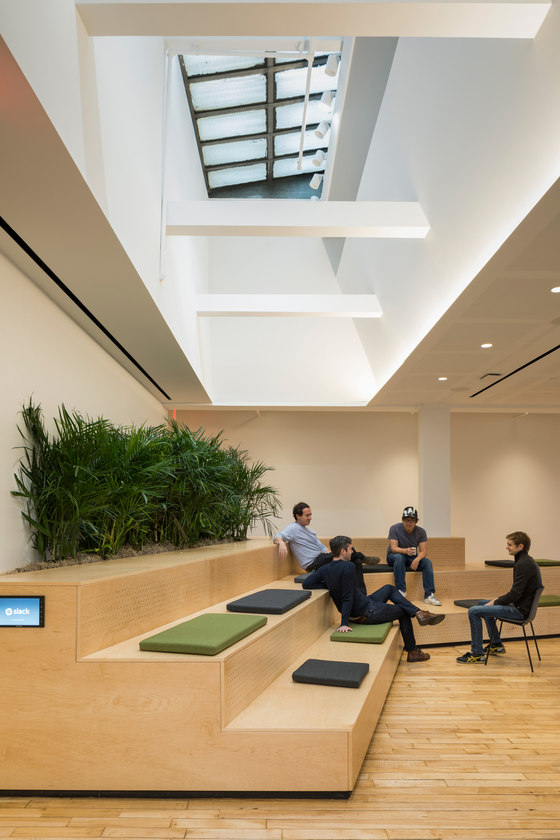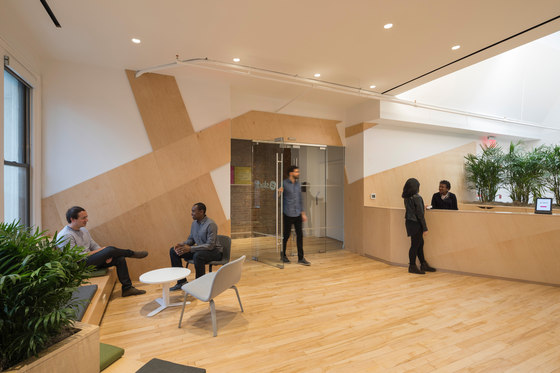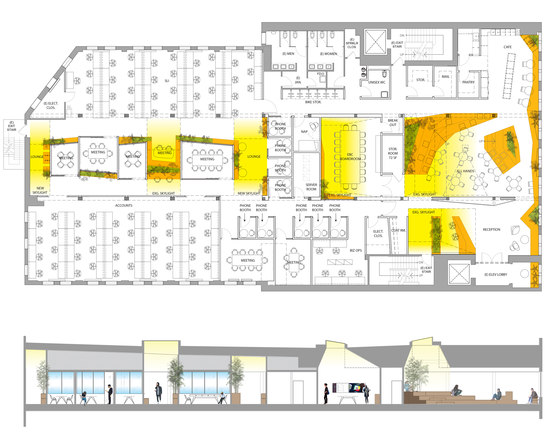Slack is the fastest-growing workplace software in the world. With over 6 million active weekly users, the intra-office messaging system is revolutionizing the way teams communicate around the globe. For the startup’s New York City headquarters, Snøhetta retrofitted a 12,000 SF space on the top floor of an 1880’s landmarked building in Lower Manhattan’s NoHo/East Village neighborhood to provide a versatile, sunlight-filled office.
The design of each of Slack’s offices around the world aims to integrate elements of their local context, and Snøhetta’s design for Slack’s new NYC space is inspired by the city’s distinctive urban courtyards. Drawing inspiration from interior parkscapes like Paley Park, bamboo plants provide natural privacy screens and energize the space with greenery. Four existing skylights with enlarged, splayed ceilings dramatically increase the incidence of natural daylight deep into the space and the pocket courtyards beneath them.
The office’s restrained material palette is evocative of an artist’s studio space with hints of color, angled plywood panels and custom light fixtures subtly reference Slack’s brand identity and imagery. The design represents a maturing tech office typology: Employees are encouraged to venture out of the office for coffee and lunch breaks, and integrate themselves into the neighborhood surrounding Astor Place. Further, underpinning Slack’s mission to improve workplace efficiency is its own dedication to the well-being of their employees – an internal motto is “work hard and go home.” At the forefront of the next generation of tech offices, the design of Slack’s NYC headquarters similarly embodies their commitment to improving workplace communication and culture.
Upon arrival, employees and visitors pass the reception desk and are welcomed into the social heart of the office, a generous multi-functional ‘all-hands’ space. Stepped wooden bleachers allow users to gather for large, office-wide meetings and presentations, lunch breaks, or informal meetings while sitting under expansive industrial skylights. An adjacent lounge space is lined with plywood benches also to encourage informal social interaction and spontaneous meetings.
A corridor connects these social spaces to the work space and meeting rooms where the Engineering and Accounts teams, the two main groups using the space, sit in an open, flexible plan. A wide variety of workspaces and breakout rooms accommodate the diverse demands of Slack’s working environment, including one and two-person telephone booths to provide privacy for calls, as well as for when a more isolated work environment is needed.
Acoustics and natural light are critical in achieving a successful and comfortable open office space. The existing skylights were subtly shaped to better fill the space with soft, natural light. Regularly spaced throughout the office, they draw the eye upwards and create varied ceiling heights that suggest the spaciousness of an New York loft. As one travels the length of the space, the alternating rhythm of workspace and interior courtyard allows for breaks and moments of pause.
Acoustics are carefully managed to maximize productivity and communication for each team. Wide planes of glass allow visibility and visual connection through the conference rooms, but are acoustically separated. The non-symmetrical geometry of the meeting rooms minimize sound reflection that function dually to provide unexpected seating ledges on the exterior. The phone booths have been treated with bright, absorptive fabric panels that add a pop of color and element of surprise.
As a pioneering workplace technology, Slack aims not only to improve efficiency but also to cultivate company culture. By providing a pleasing, simple interface that streamlines workflow and encourages various types of communication, it also strives to help teams build a common sense of company culture. Building on Slack’s aspirations to revolutionize the virtual workplace, the design of its new physical work space promotes the same values. From carefully managed acoustics and plentiful natural light in the workspaces to pockets for informal gatherings and lush, indoor courtyards, Snøhetta’s design allows a variety of social interactions and work styles to flourish.
Snøhetta
Anne-Rachel Schiffmann, Vanessa Kassabian, Aaron Dorf, Rikard Jaucis, Craig Dykers
Owners Rep: Gardiner & Theobald
Construction Manager: SPK Lewis Inc.
MEP Engineer: CFS Engineering
Lighting Consultants: Kugler Ning
Acoustic Consultants: Cerami &Associates
Structural Engineer: Robert Silman
Furniture Consultants: Benhar Interiors
Key Materials and Products: GypSorb perforated drywall, Tectum acoustic ceiling panels , Fabritek acoustic wall panels, Muraflex glass wall systems, Interface carpet
Key furniture suppliers: Herman Miller, UHURU, Andreu World, Arper, Muuto, Maharam, Gala, Woodworking


